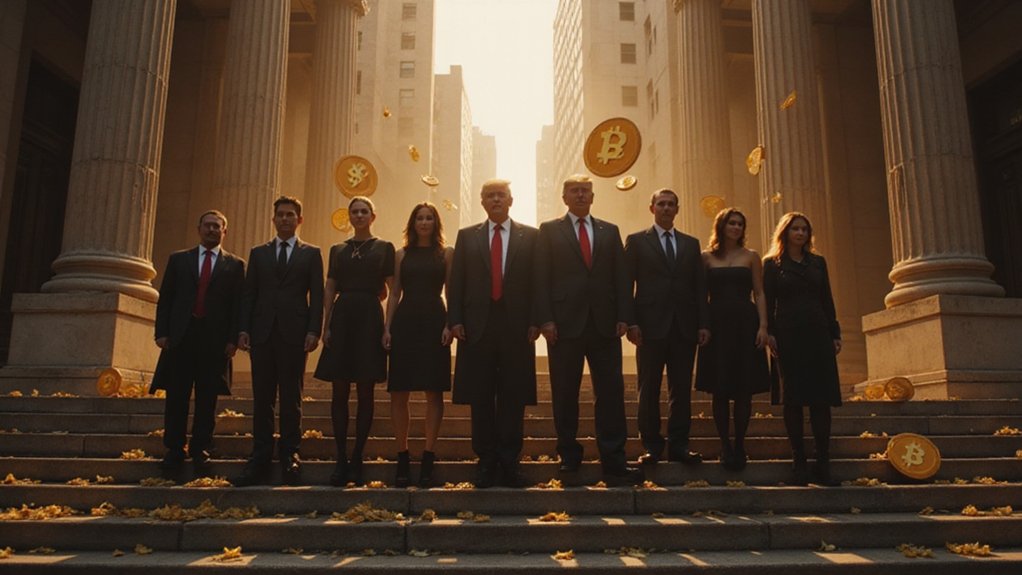While the mystical figure of Satoshi Nakamoto continues to sit atop nearly a million dormant bitcoins like some digital Smaug, the cryptocurrency landscape of 2025 reveals a paradox that would make even the most seasoned financial observers pause: roughly 106 million individuals worldwide now claim ownership of Bitcoin, yet the average holder possesses a mere 0.57 BTC—a sum that, depending on market whims, might cover either a luxury vacation or a modest dinner out.
This mathematical reality transforms full Bitcoin ownership into an increasingly exclusive club. With approximately 200 million wallets distributed among 106 million owners globally, the concentration dynamics become starkly apparent—particularly when considering that MicroStrategy alone hoards 580,250 BTC while Binance‘s cold storage clutches another 248,598 coins. The arithmetic is unforgiving: if current holders maintain their modest 0.57 BTC average, owning a complete Bitcoin places one among the financial elite.
The arithmetic is unforgiving: owning a complete Bitcoin transforms from achievable goal into genuine marker of financial distinction.
The demographic distribution adds layers to this scarcity narrative. Vietnam leads global adoption with over 21% of its population holding Bitcoin, while the United States boasts 65.7 million cryptocurrency owners—roughly 28% of adults. Yet these impressive adoption figures mask the underlying concentration problem. Men comprise 61% of global ownership (67% domestically), with older Millennials and Generation X driving adoption rates despite the median owner age settling around 45 years.
Asia’s 326 million crypto users represent the largest continental contingent, though population scale obscures individual holding sizes. The average wallet contains merely 0.36 BTC, suggesting most participants remain occasional dabblers rather than committed accumulation strategists. This shallow engagement pattern persists despite institutional endorsement—corporations increasingly view Bitcoin as an inflation hedge and portfolio diversification tool. Regulated infrastructure providers like Paxos offer custody services that enable institutional investors to securely manage their cryptocurrency holdings while maintaining regulatory compliance. The Bitcoin ETF approval by the SEC on January 11, 2024, further legitimized institutional participation and heightened competition for limited supply. The growing sophistication is further evidenced by approximately 400,000 daily active users engaging with Bitcoin networks, indicating sustained ecosystem vitality beyond mere speculative holding.
Market sentiment indicators suggest intensifying competition for whole coin ownership. Among current holders, 66% plan to increase their positions in 2025, while 14% of non-owners globally intend to enter the market. These expansion intentions, combined with institutional accumulation pressures and the mathematical reality of 21 million maximum coins, suggest full Bitcoin ownership will become increasingly rarified—transforming what once seemed achievable into a genuine marker of financial distinction.









